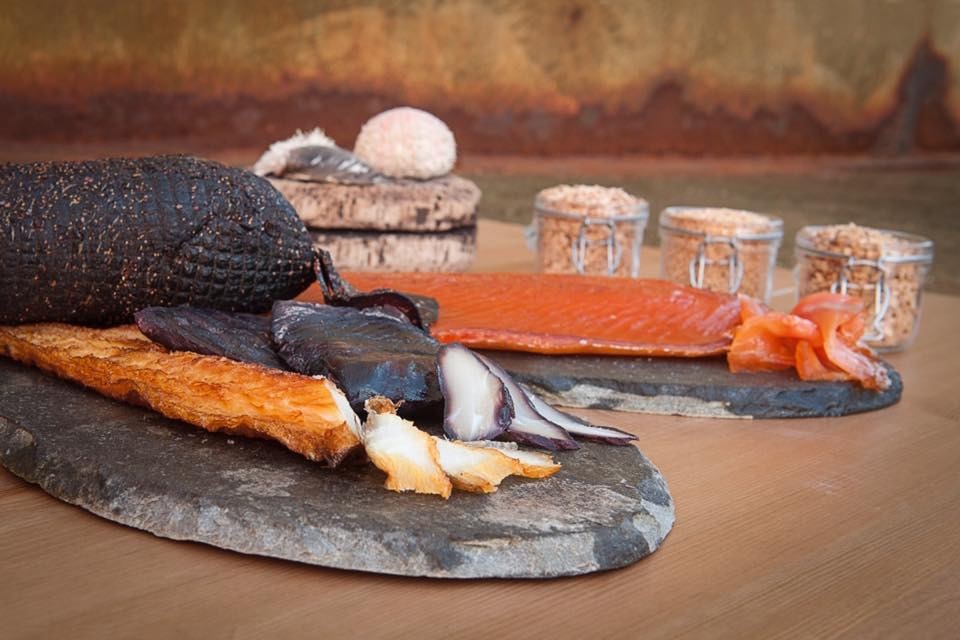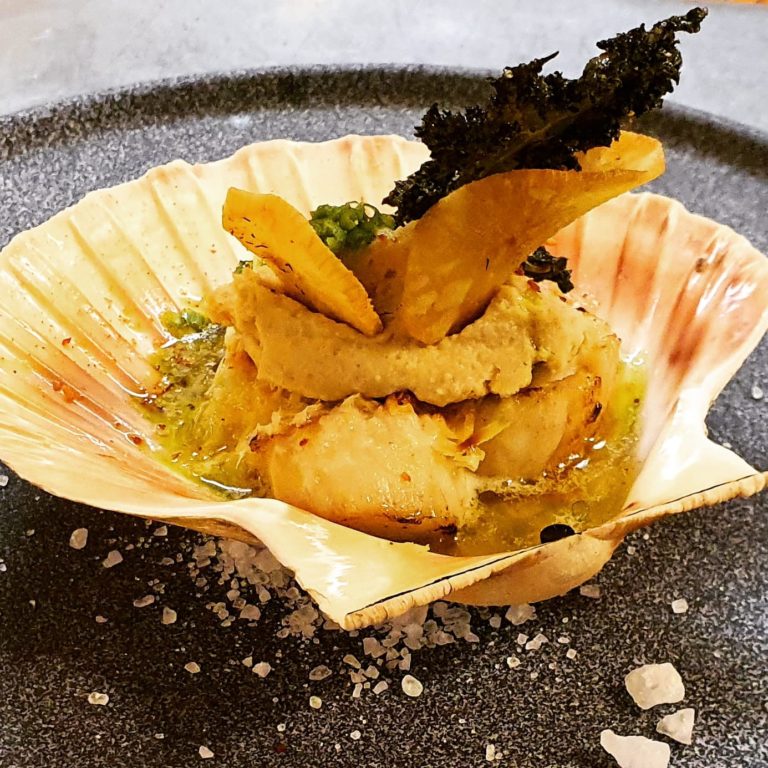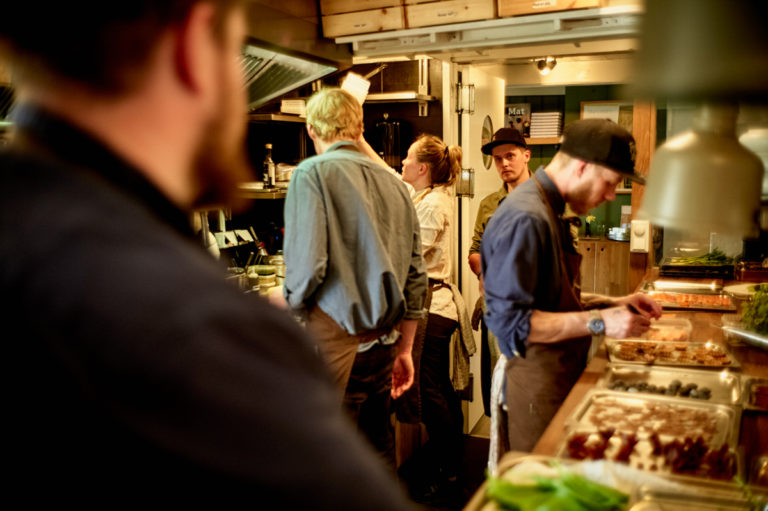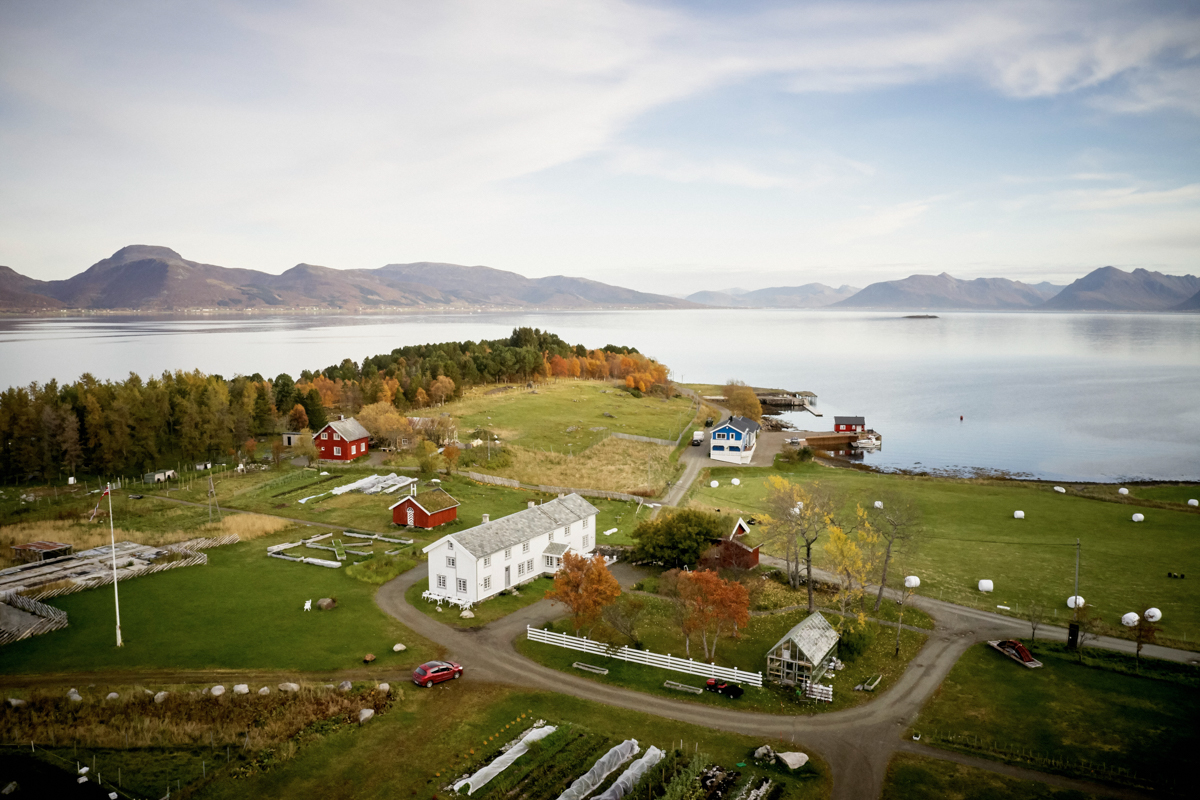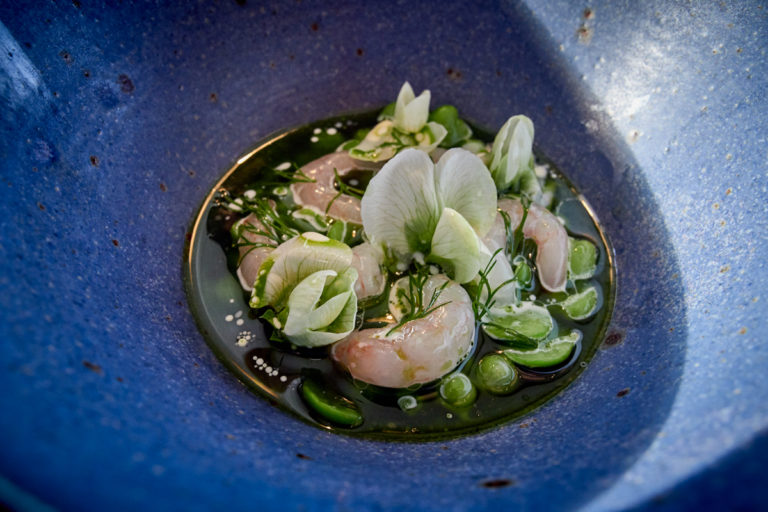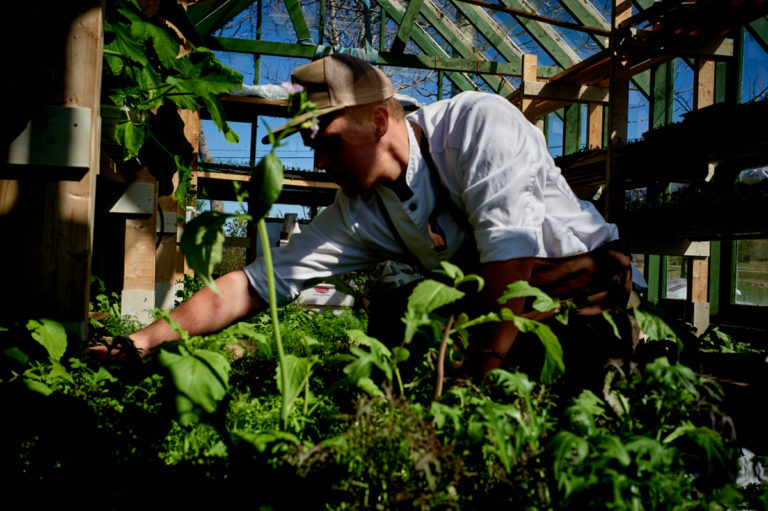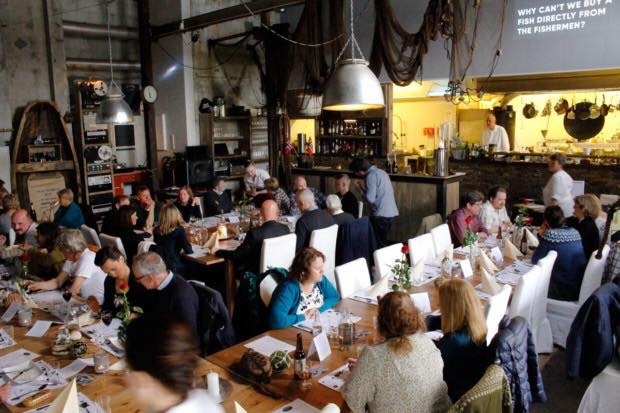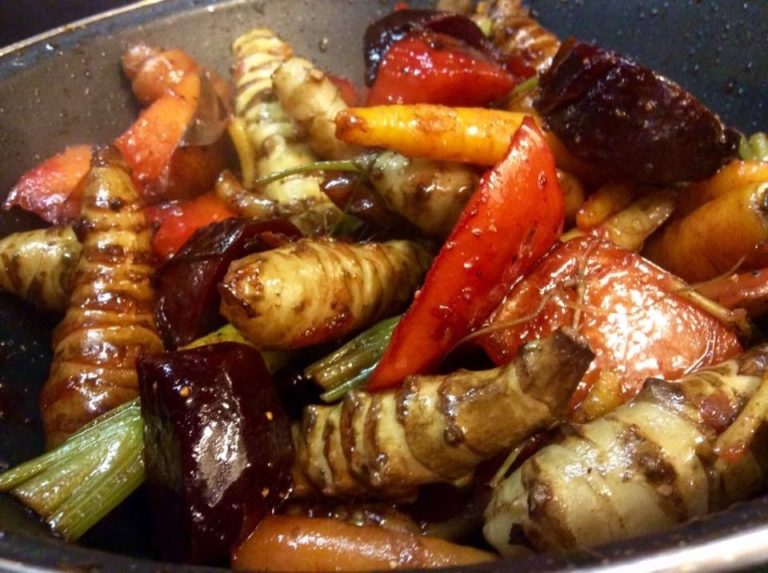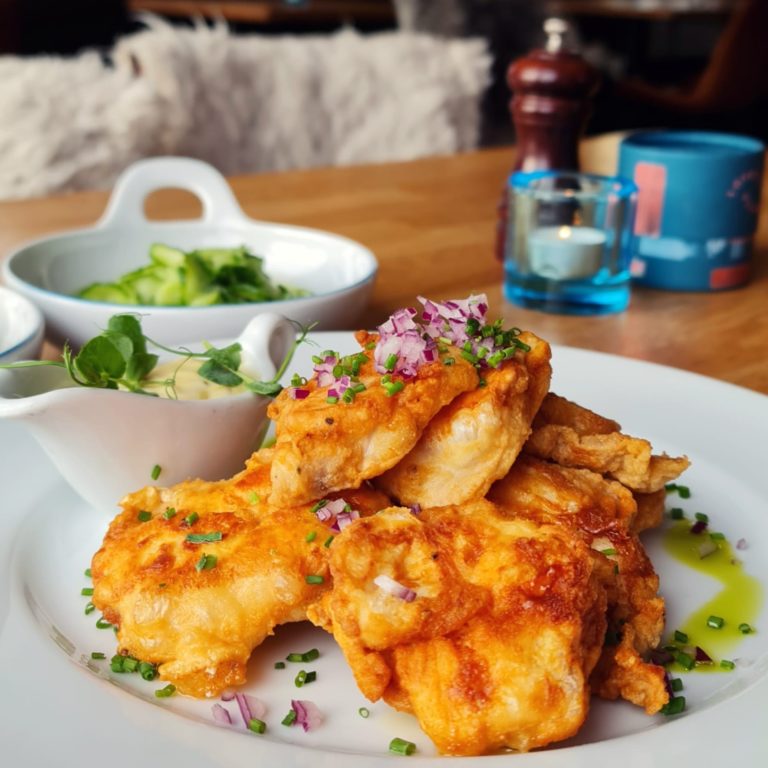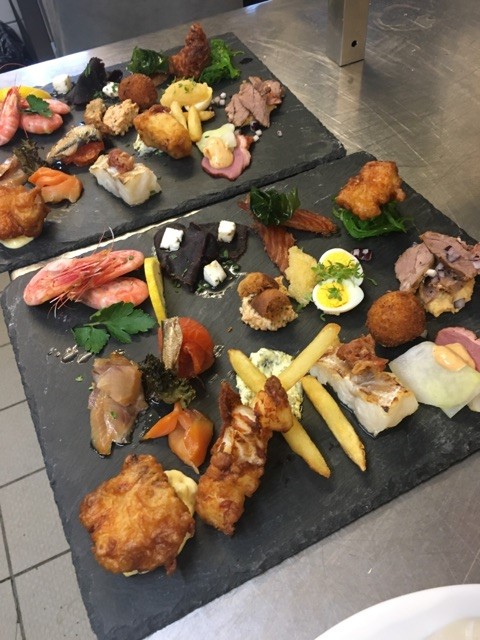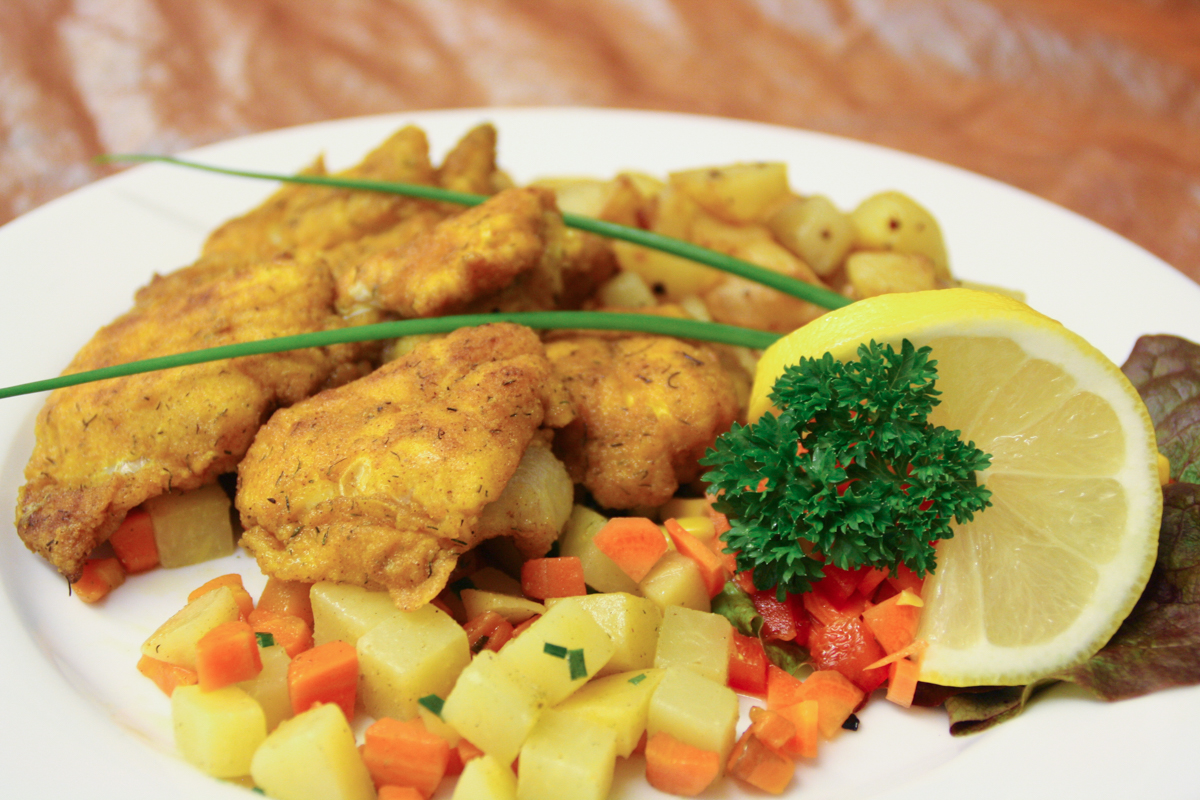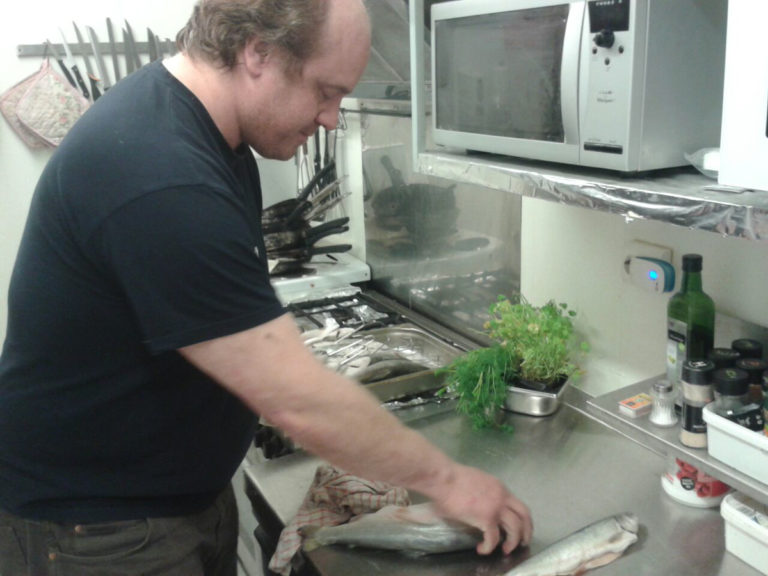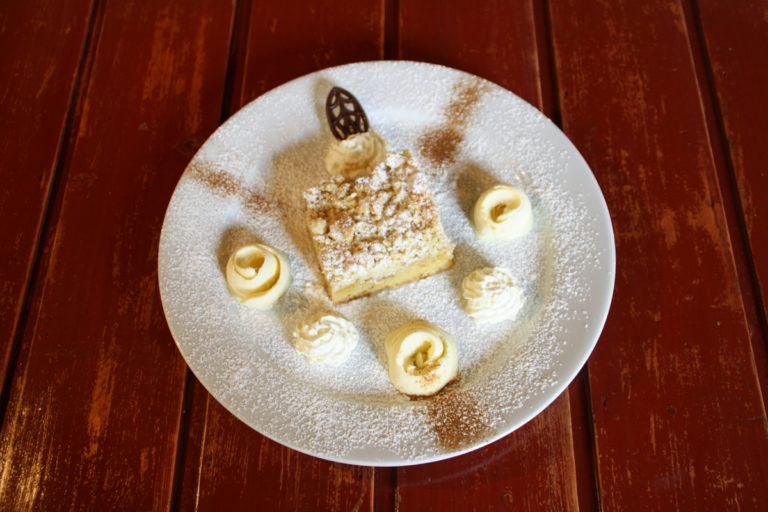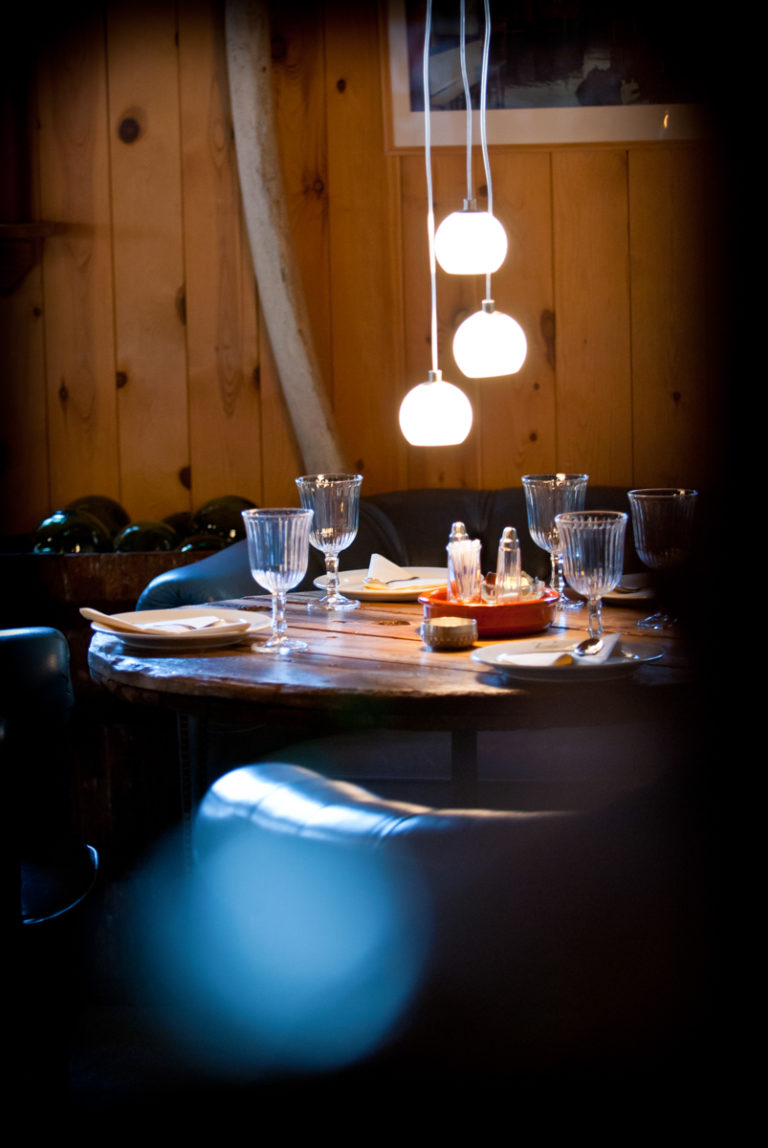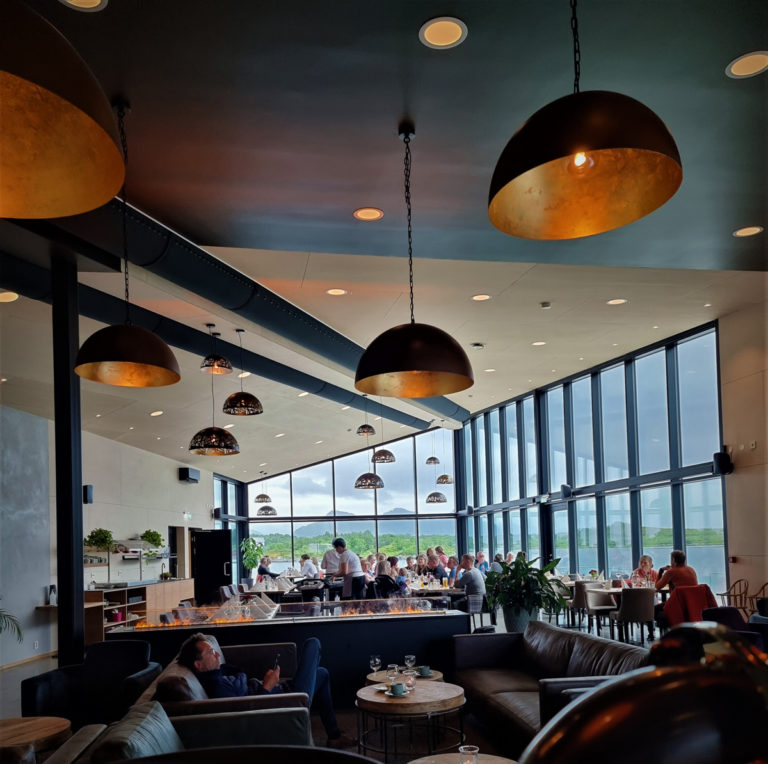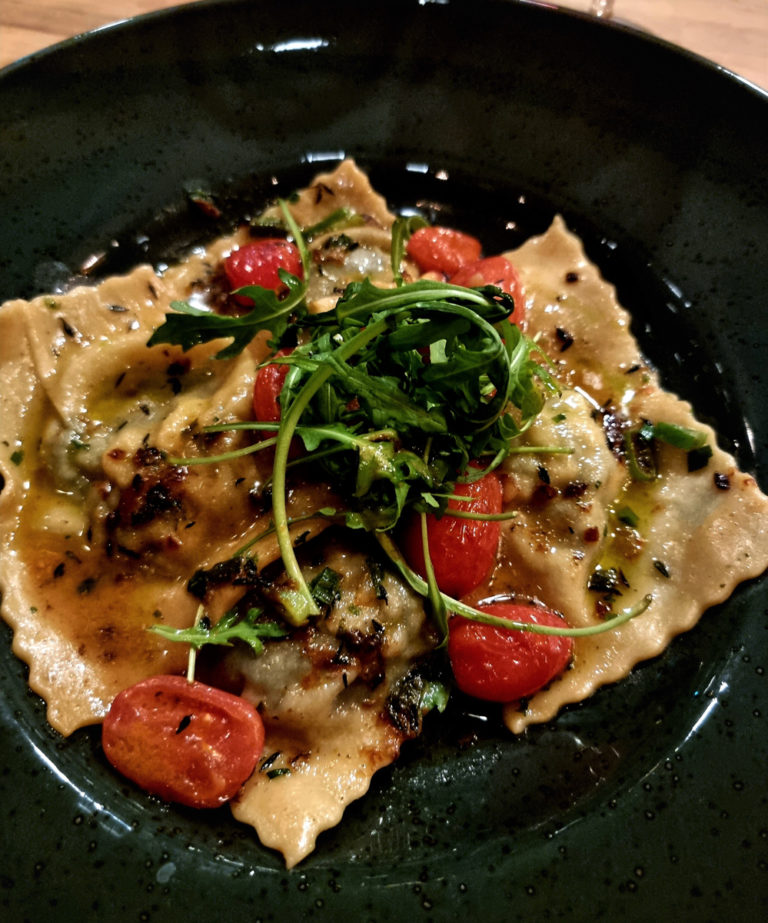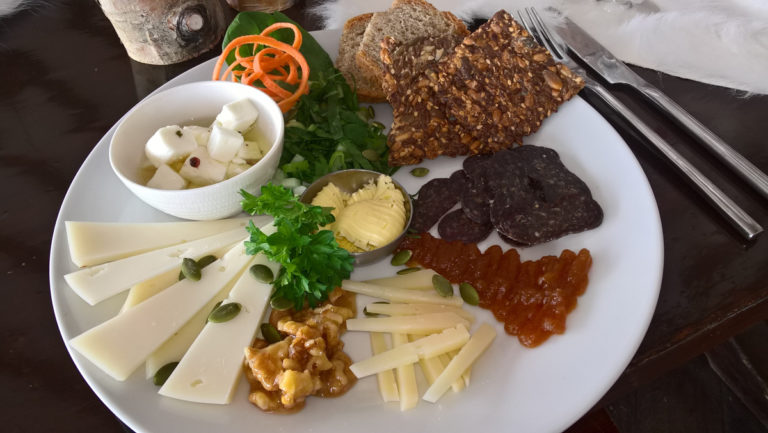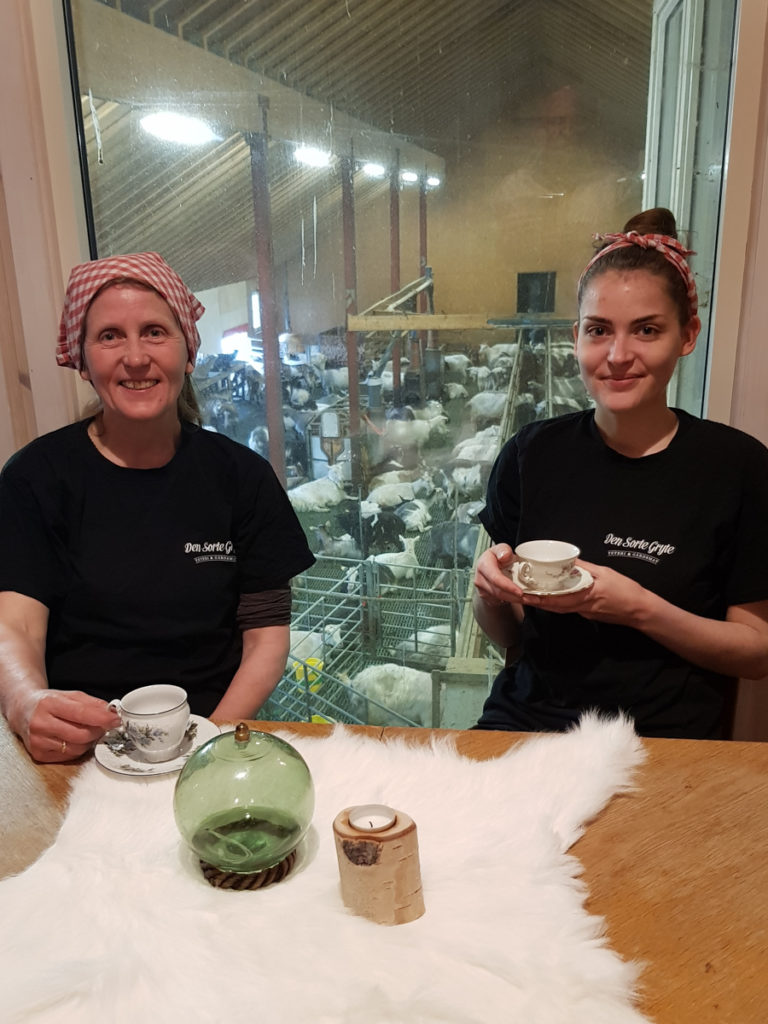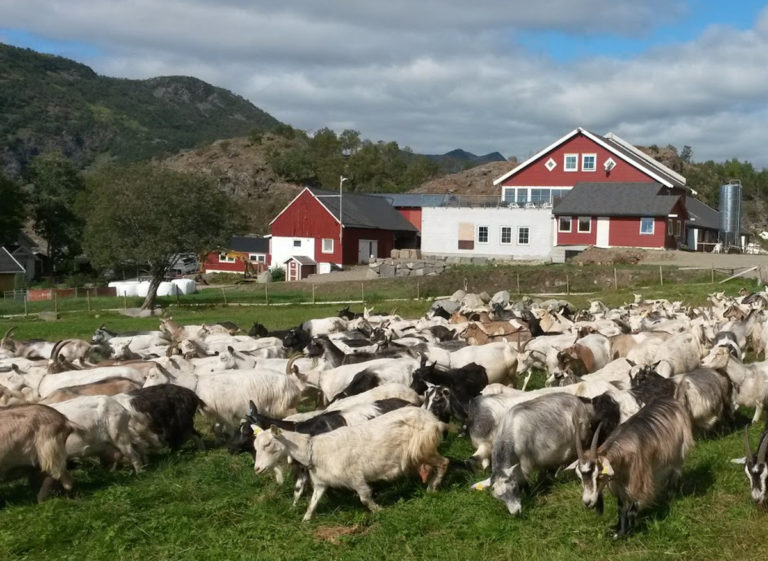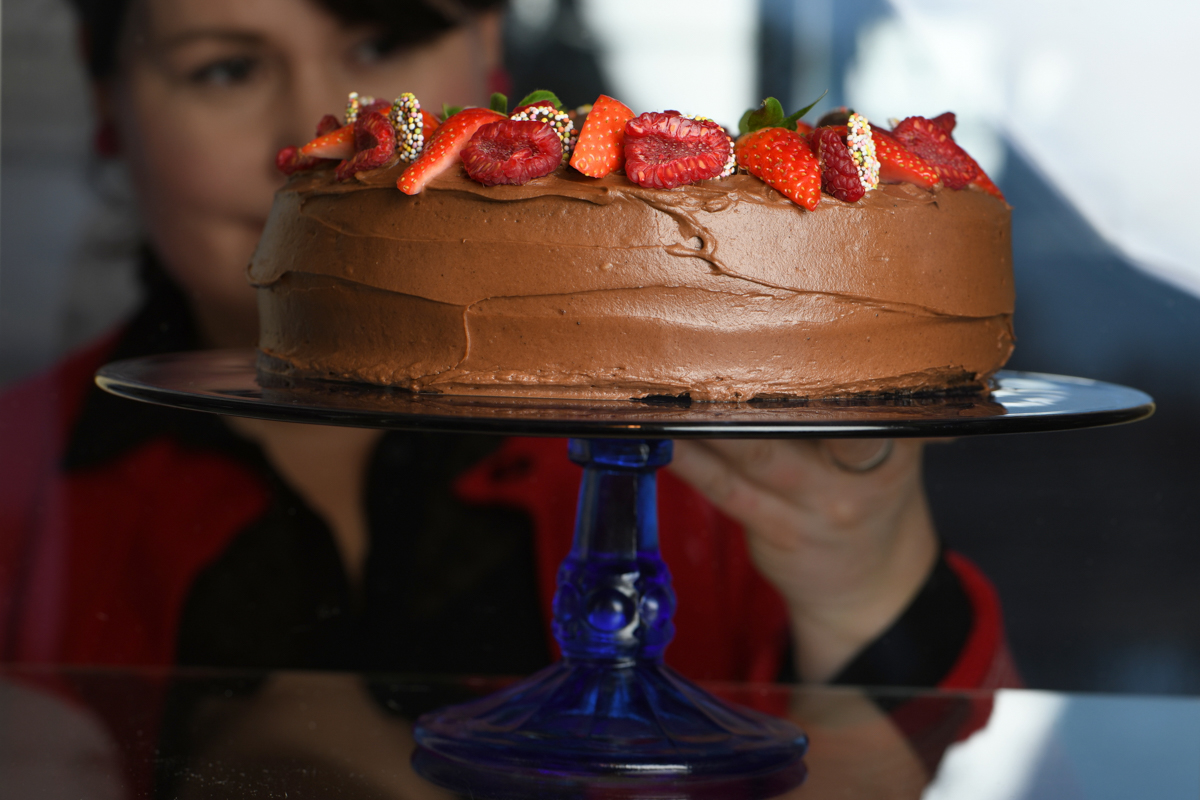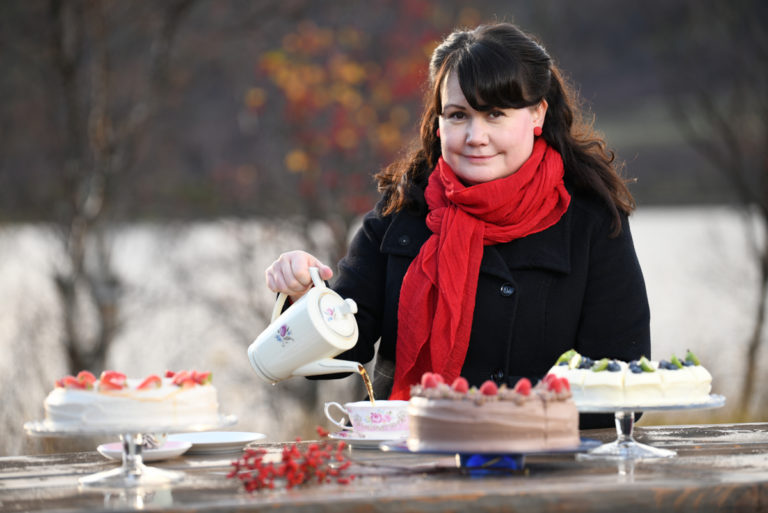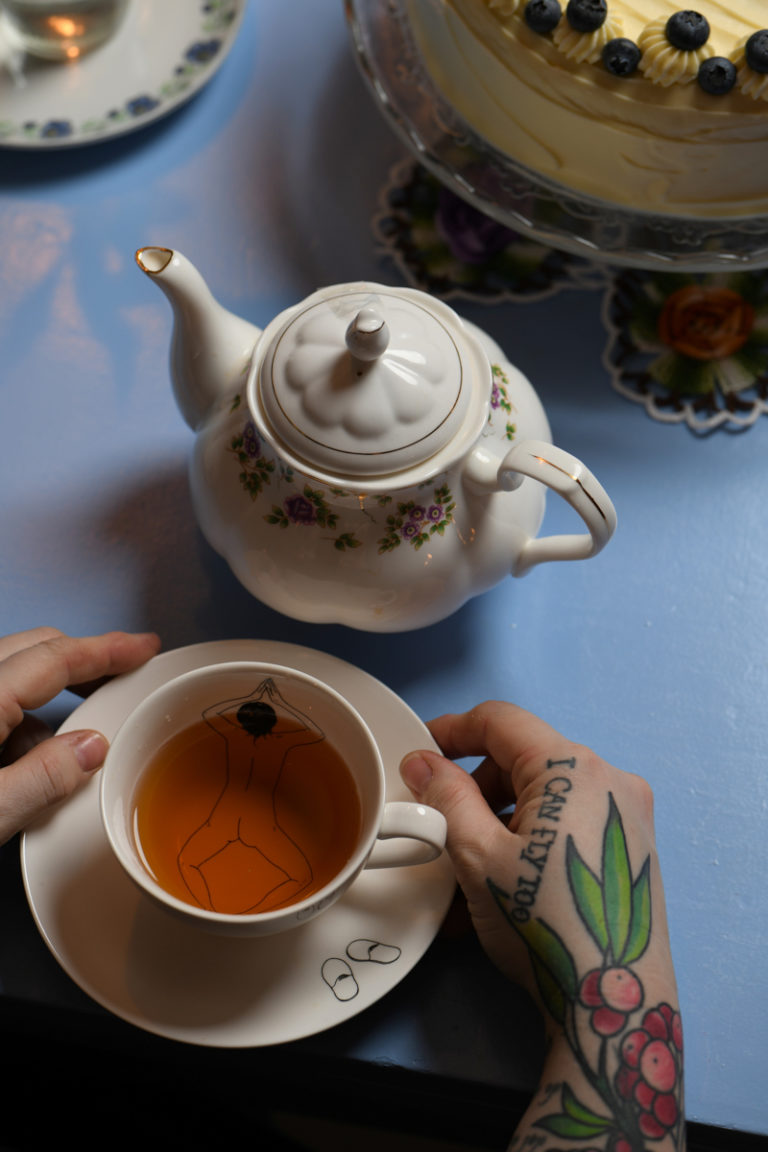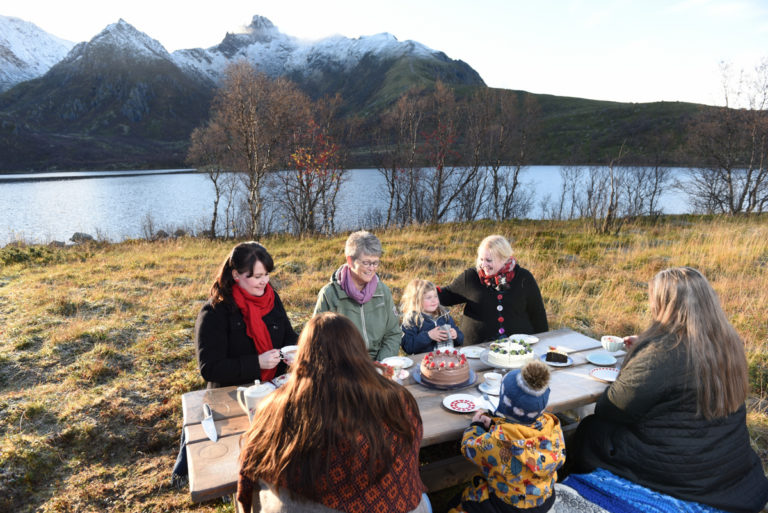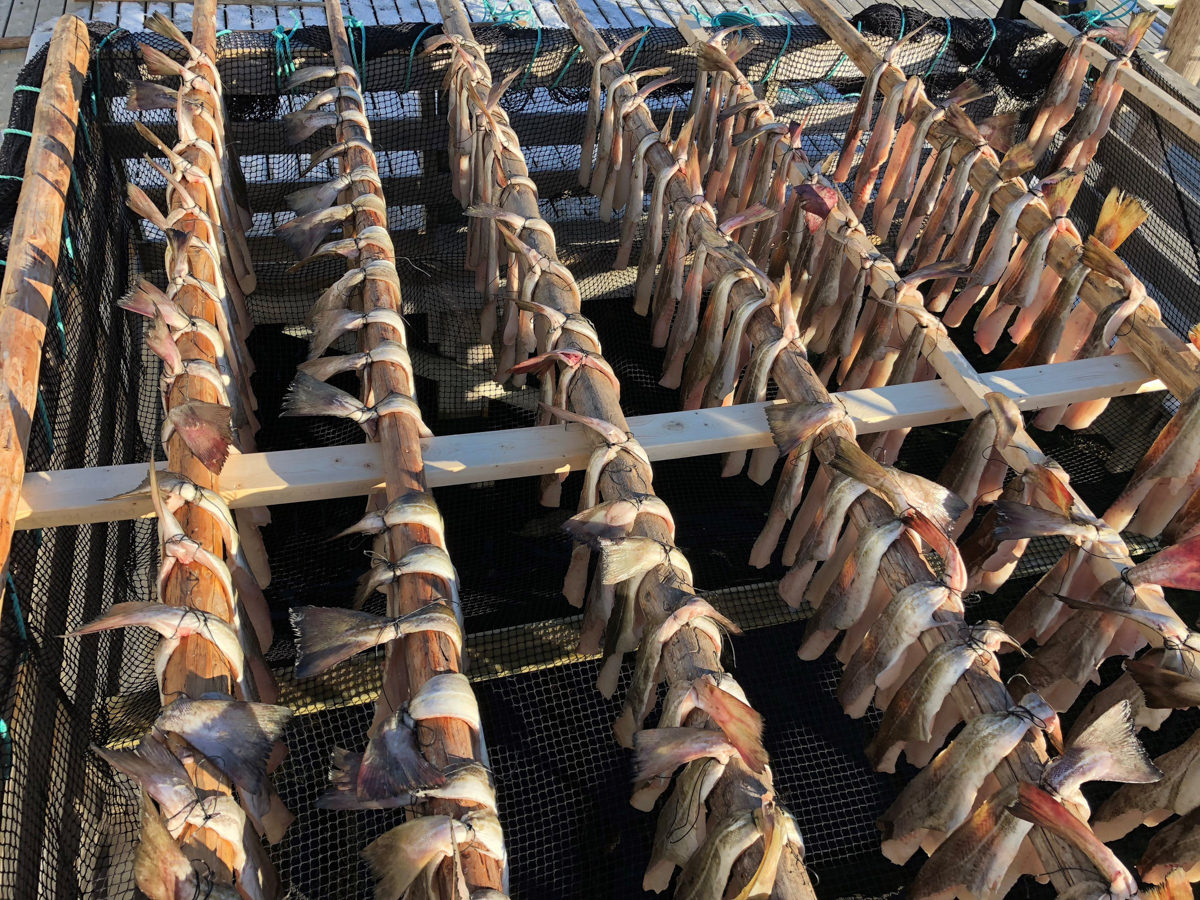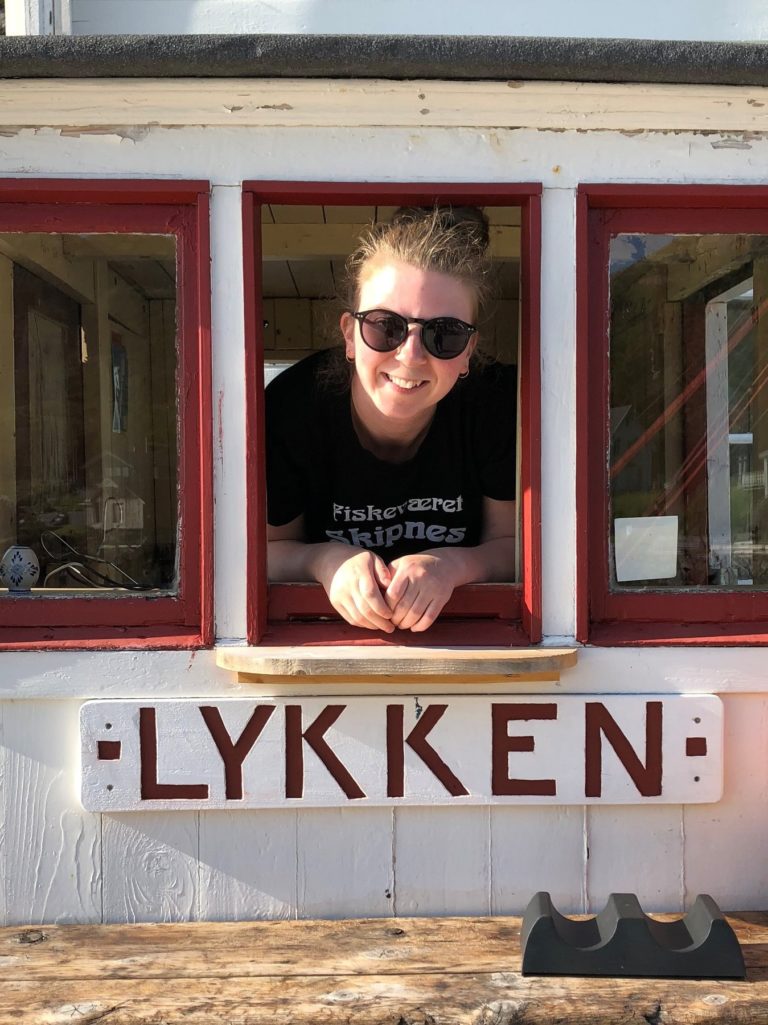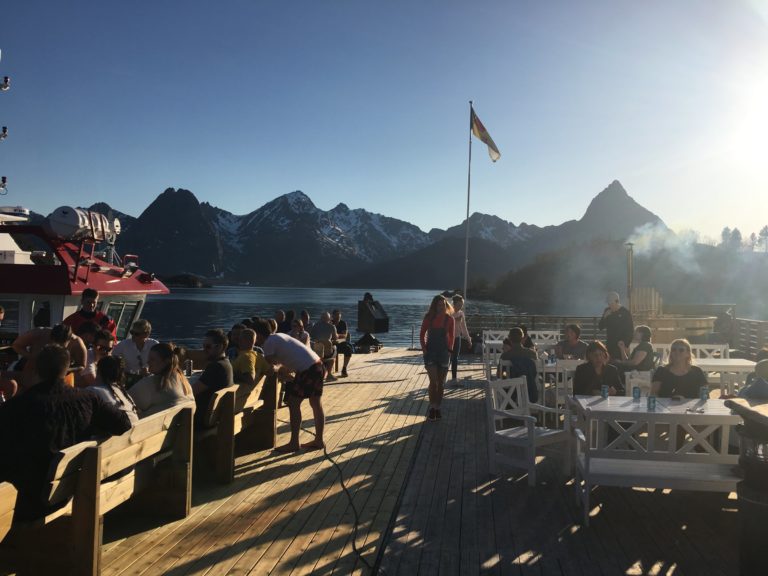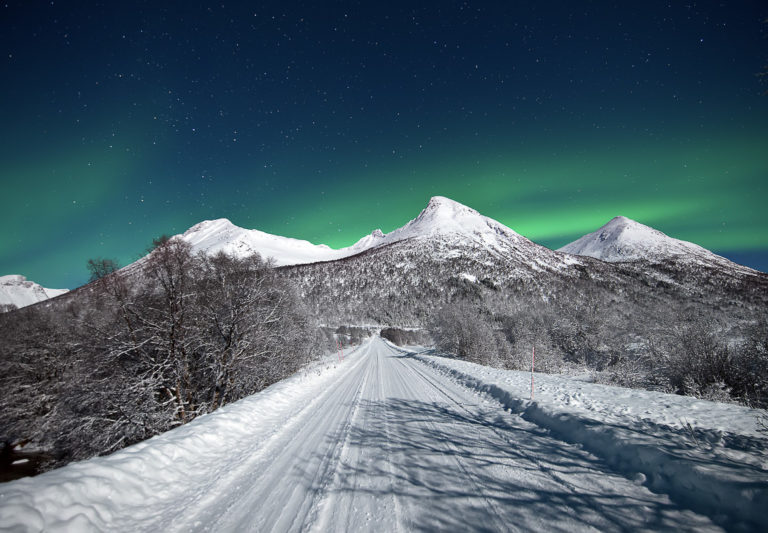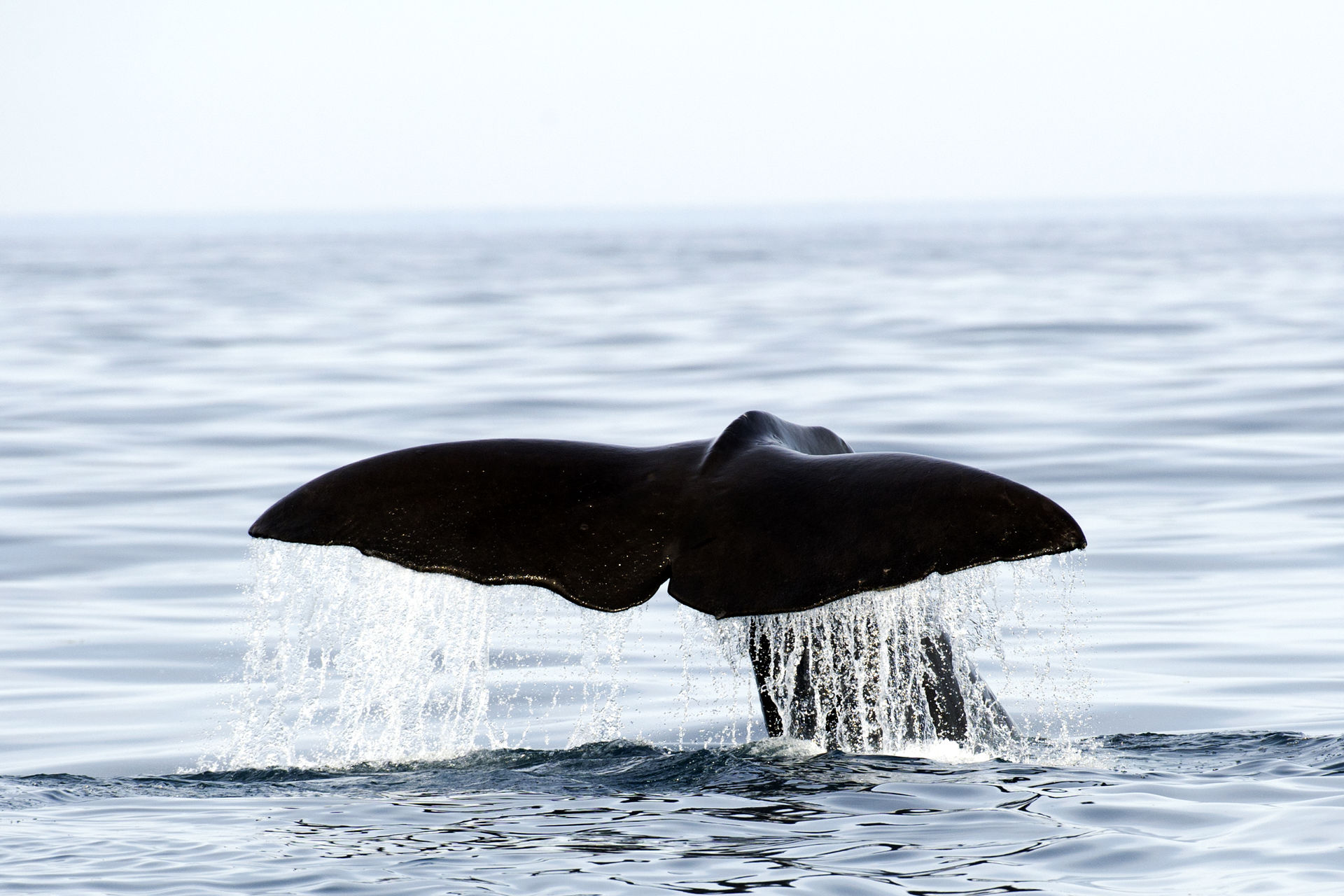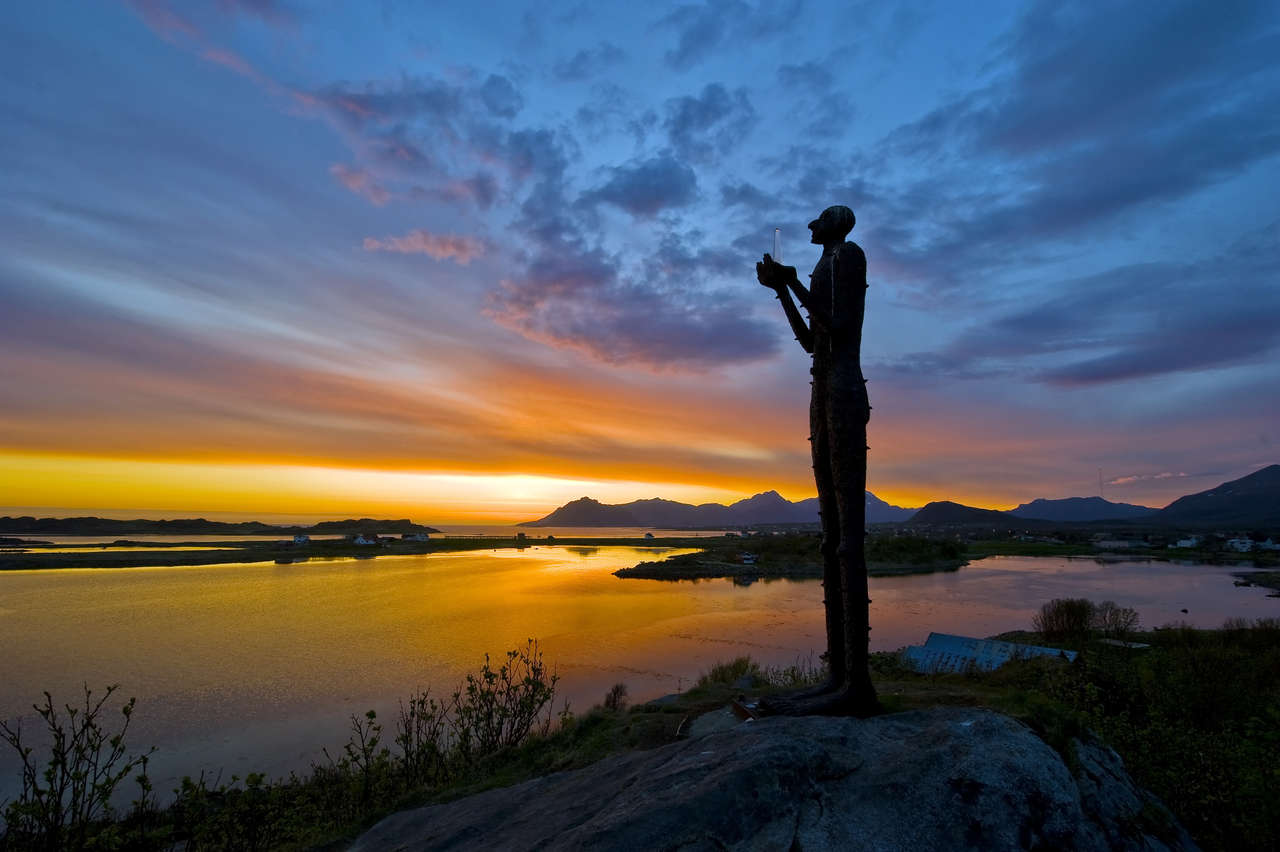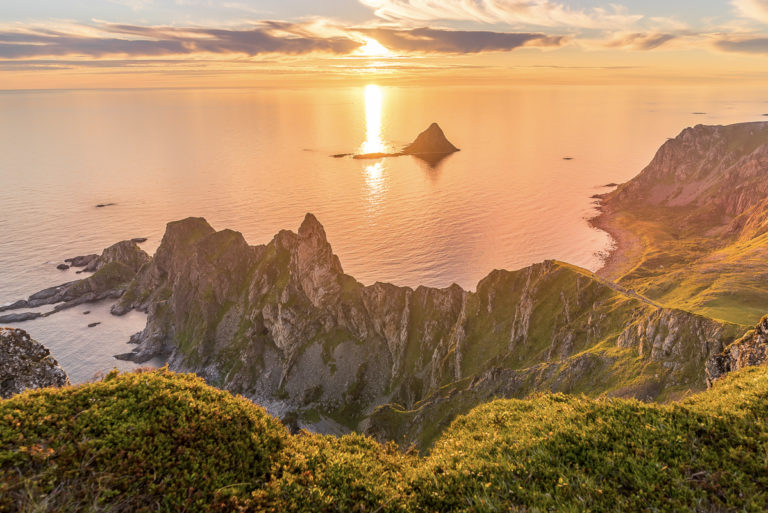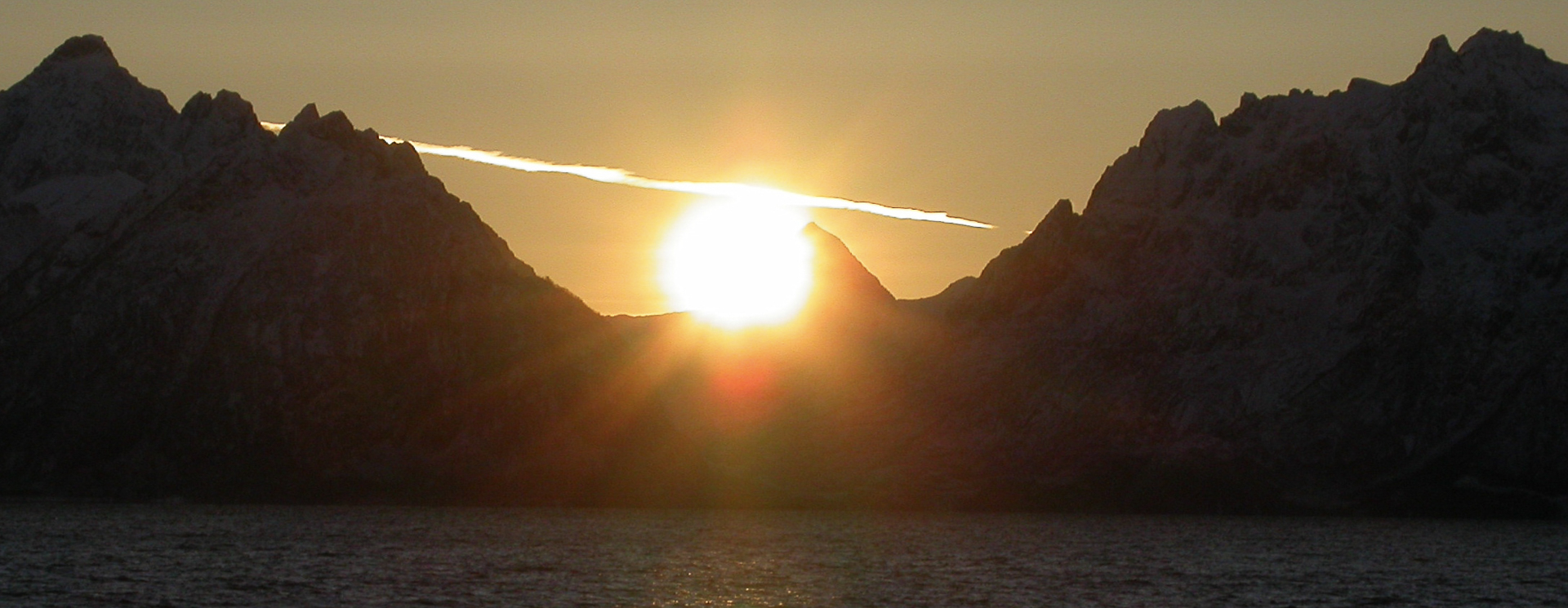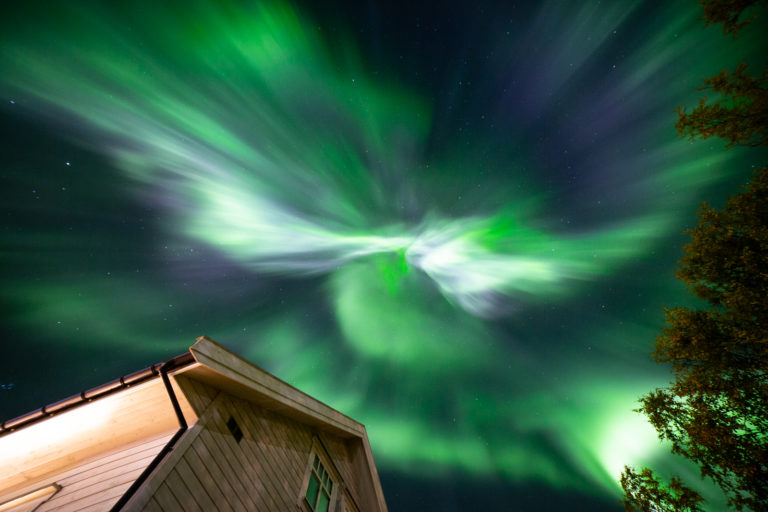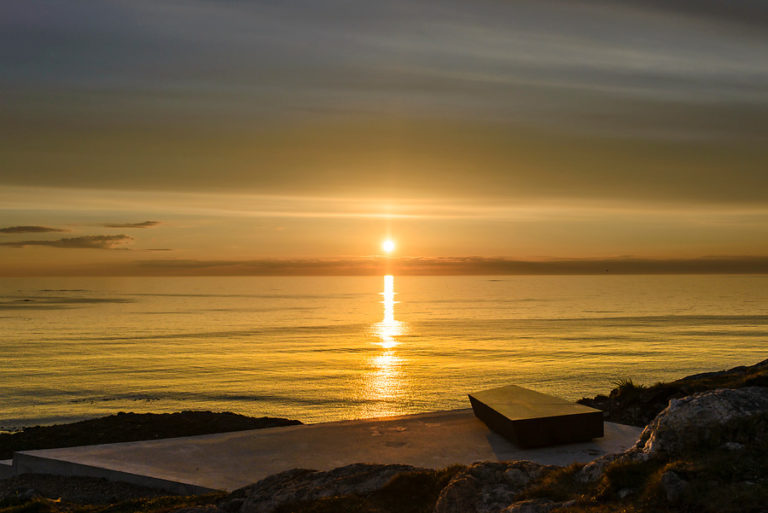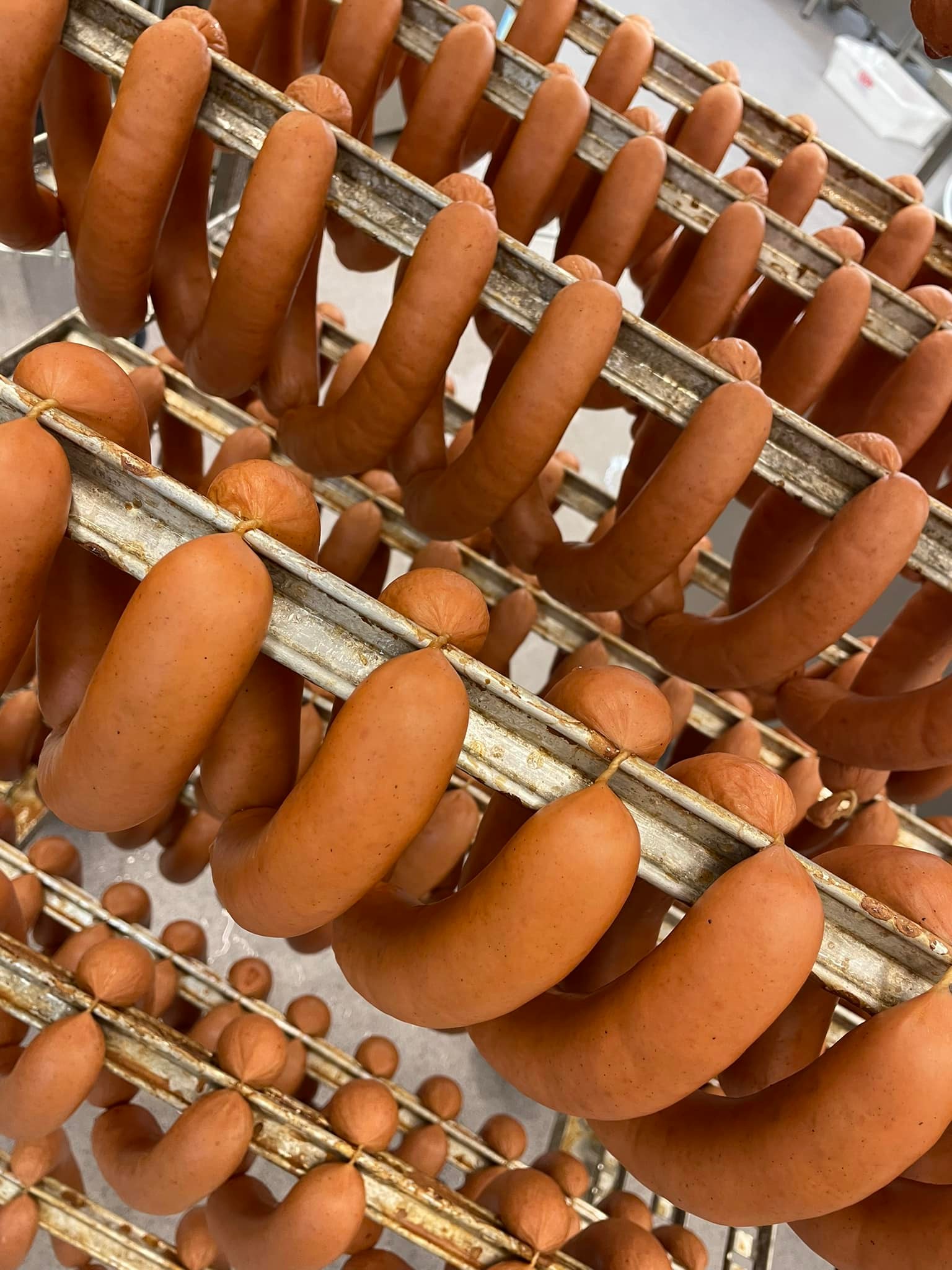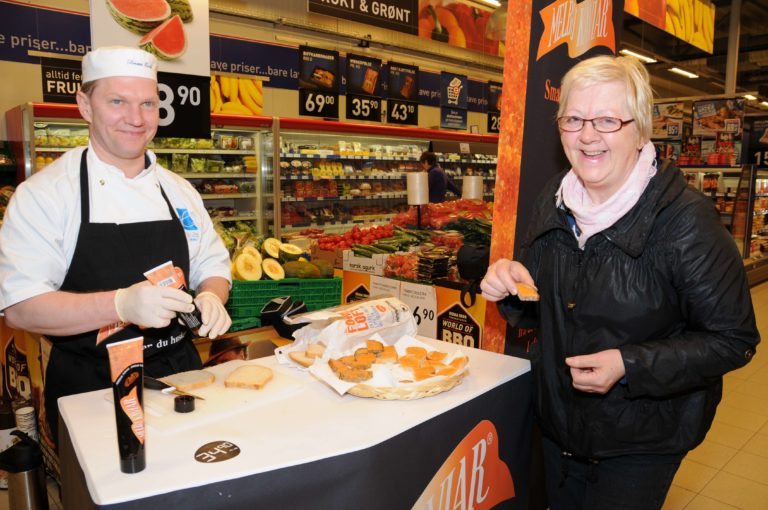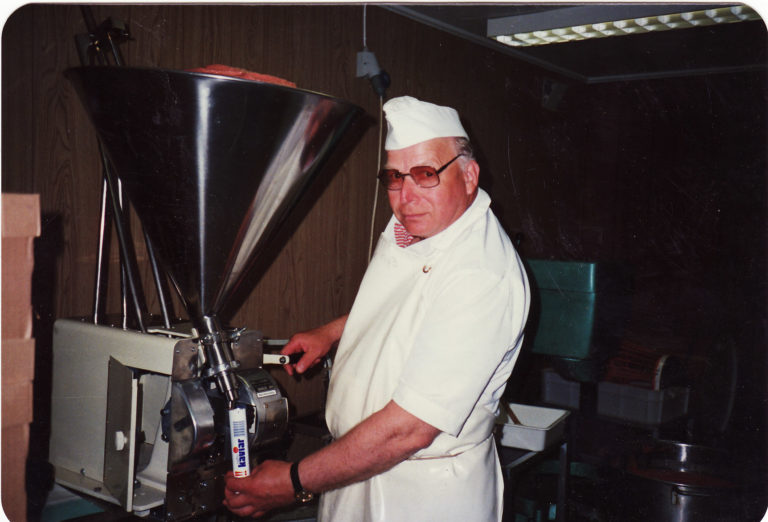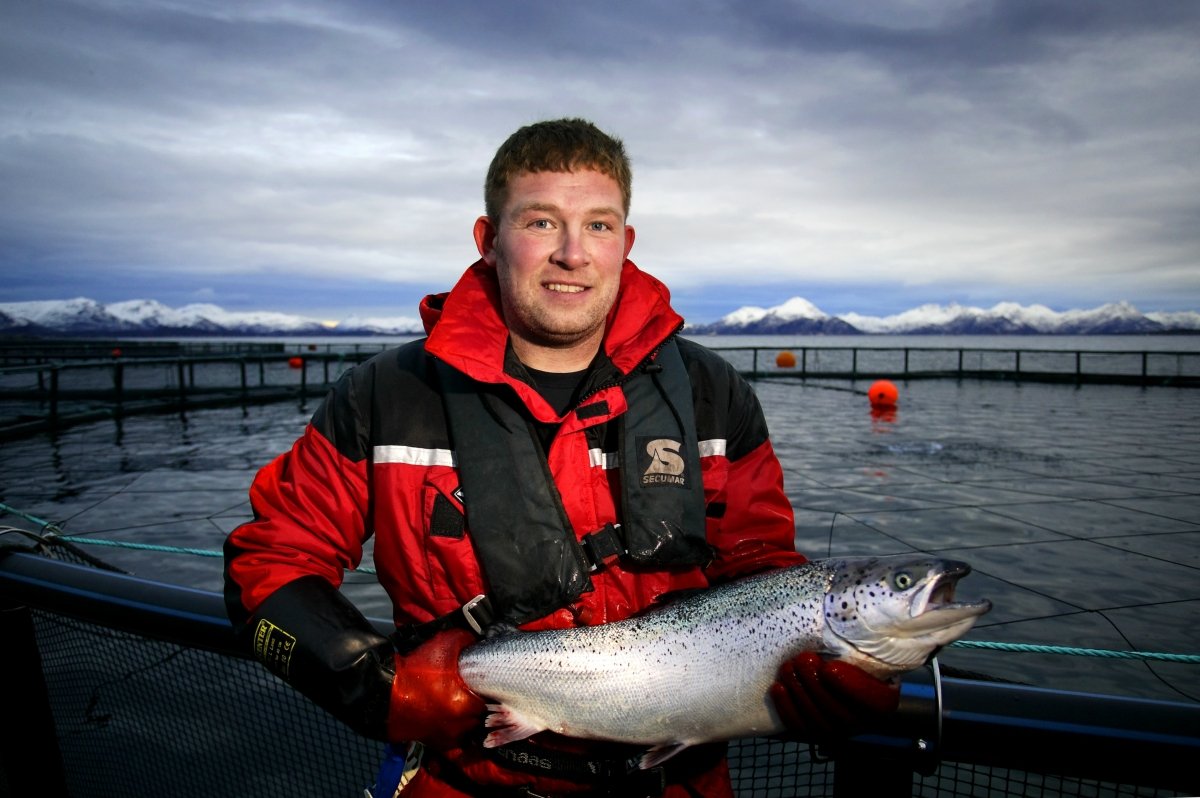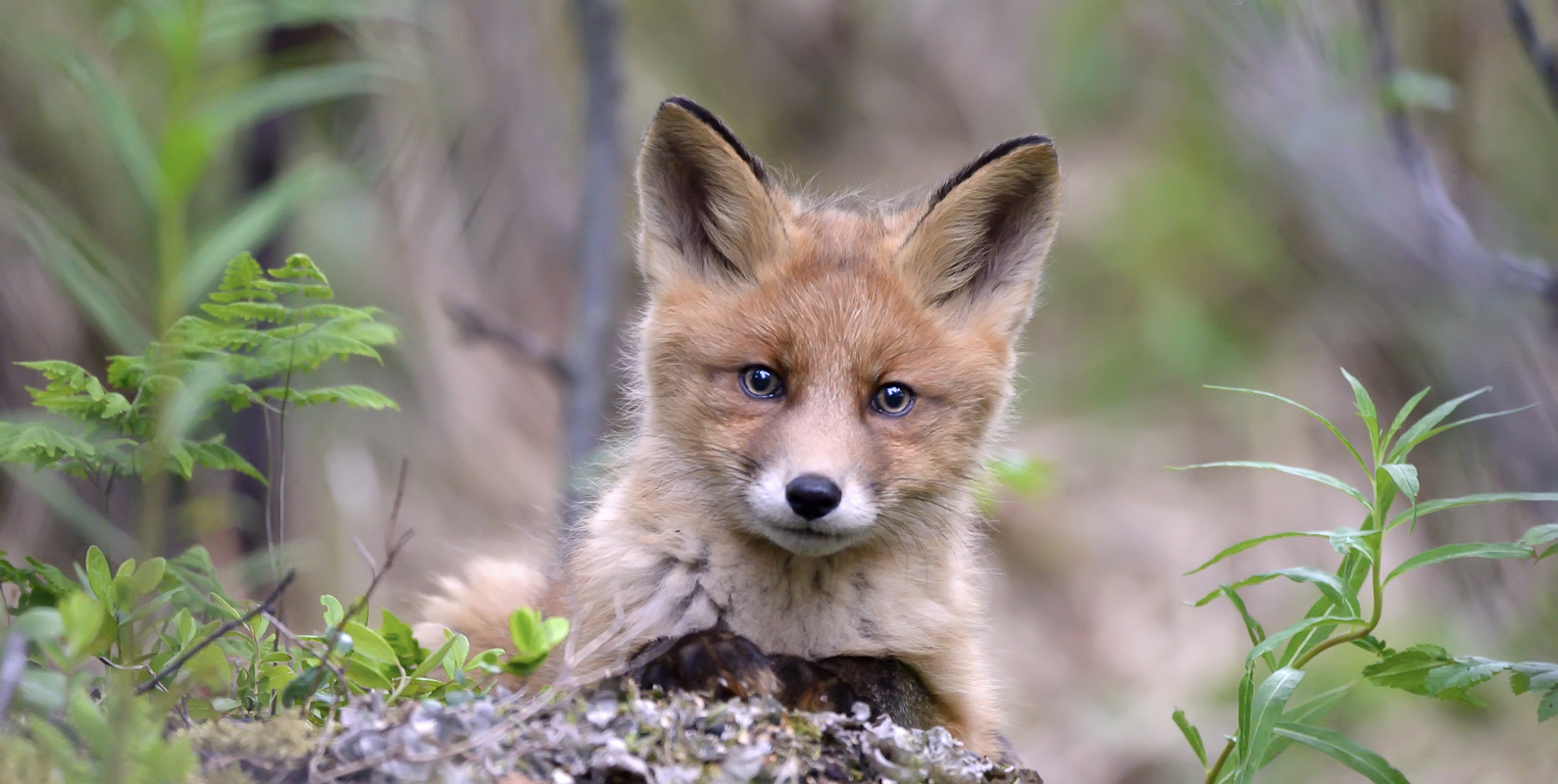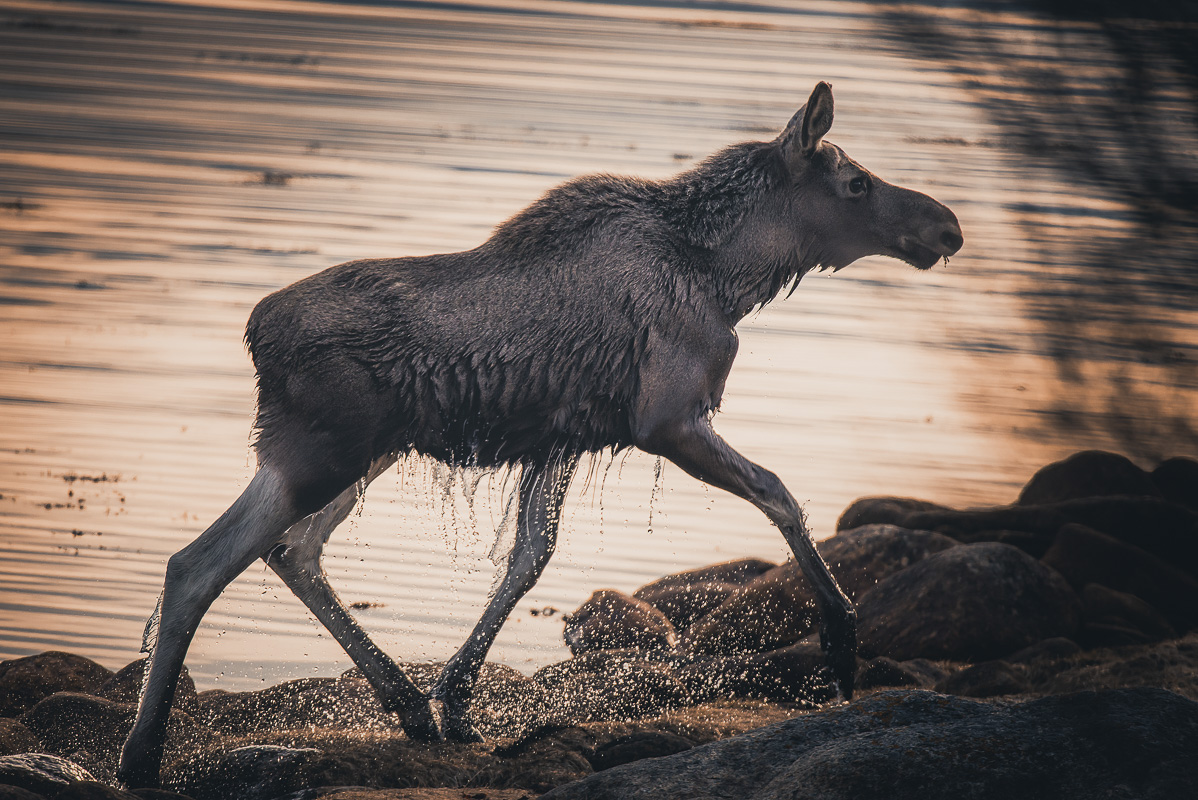The green islands of Vesterålen have an abundance of foodstuffs, both from the ocean and from the green pastures lining the fjords and waterways. Receipts handed down through generations, conservation methods described in the sagas and modern, inventive interpretations; there are lots of surprises on the Vesterålen platters. This is your guide to fine dining, to sociable – even laughable – evenings, to filling food after your hike and to unexpected palate secrets along the winding roads of Vesterålen.
Vesterålen is found in the richest ocean in the world
The waters are teeming with life around the Vesterålen islands. In winter, the Norwegian-Arctic cod is at its most lovesick and makes the long trek from the Barents Sea to the waters off Vesterålen, Lofoten and Senja to spawn. It then also changes its name to skrei, derived from an archaic word for wander, or migrate. From January to early April, enormous catches are landed in fishing villages like modern Myre and more traditional Stø. The summer fish par excellence is the saithe – aka colefish or pollack – that migrates in in late summer. There is halibut, redfish, wolffish and haddock, and lately northerners have learned to appreciate shells and prawns.
How do you keep the fish for more than three days?
Guests and fish stink after three days. One thus has to do something with the fish if one wants to keep it. Stockfish is dried on fish racks in a winter climate that isn’t cold enough to freeze the cod to pieces, but not warm enough for it to rot. Stockfish – tørrfisk – can be made into the infamous lutefisk pre-christmas dish, or grilled. A semi-dry version of stockfish is boknafesk, which is often dried in a cage-like box on people’s balconies. Roe from cod can be smoked and served as a tasty starter.
Arctic agriculture serves up some surprises
A bit more surprising to outsiders is the agriculture of the north. Raising sheep, goats and cows started thousands of years back on the green fields that line the inner waterways of Vesterålen. The growing of barley, neep, and angelica along with some herbs goes way back, and the last couple of centuries, potatoes and carrots have been grown extensively. Black and red currants, raspberries and strawberries ripen slowly in the cool summer, giving a strong, concentrated aroma.
Move into Kvitnes gård for traditional farm food turned into art
Chef Halvar Ellingsen has made an old family farm, Kvitnes gård, in a remote corner of Vesterålen into a laboratory of Northern cuisine. He first worked his way through star-studded restaurants in Oslo. Then he moved back to his ancestral home to explore Vesterålen’s own culinary traditions. Here, every day is a banquet of 20-30 different servings, presenting every foodstuff available right now.
All the food is local
The veg and the spices are grown by the chefs. They also raise ducks, chicken, quails and cows. If it’s not home grown, it comes from local producers around the islands. Prepared with traditional techniques such as salting and fermenting, the delicacies are presented with style and elegance. Thus, tradition meets fine dining. One usually stays the night. Then you can digest looking at fjords and the mountains.
Find tasty food and a good laugh amid rusty, old industry
Who would think you could have tasty meat dishes right in the middle of rusty, old herring oil tanks? Neumann’s Røykeri og Supperclub – røykeri means smokery – is a jolly, cheerful place run by Peter, a German parachutist having landed in Melbu. The sausage is made on the island of Skrova following Peter’s receipt. The duck, pork and beef are local. Removing the grilled stockfish caused a public outcry locally. Expect generous portions of taste, locally made food and cascades of laughter from the neighbouring table.
Nyksund is closest to the fish banks
When you have made it to the very edge of the open Atlantic, to the old fishing village of Nyksund, fish should be on your menu. At Ekspedisjonen, fish reigns supreme. Skrei, that big cod, is on your platter in winter. In summer, it all depends on what the well-connected chef has found, monk fish, halibut, wolf fish. Tørrfisk – grilled stockfish, is a favourite. The very curious should seek out the 12 different delights of the “A taste of Nyksund” platter. Diehard carnivores love the viking sheep breed on their plate.
Holmvik Brygge is the home cooking alternative
Nothing beats the homely atmosphere of Holmvik Brygge, overlooking the quiet port of Nyksund. Come here for cod’s tongue, arctic char and other specialities, and finish off with a solid, German streuselkuchen. After all, Nyksund’s revival is thanks to German initiatives. This is a place to relax and meet new people over a post-dinner glass.
Arresten serves the best jail food in the world
Andenes, the historic fishing town at Vesterålen’s northern extremity, never was that crime-ridden. This maybe why the best restaurant in town – housed in the old jail – is a warm and welcoming place, full of Scandinavian “hygge”. For lunch, Arresten is an informal burger place. For dinner it’s upped a notch to perfectly cooked fish and delicious maritime starters with wines to match.
Ringstad Resort has a disturbing view
The magnificent view from Ringstad Resort through large windows to Lofoten’s unknown northern coast makes you forget your hunger. Vesterålen’s fresh food stuffs will, however, revive your appetite. Sometimes it’s pure tradition, only served in that festive way you expect. Just as often, it’s daringly inventive, such as their cod-filled ravioli. Excellent presentations, perfectly matched wines, it’s all a delight.
There is no mail for you at Skagakaia, so have dinner instead
Bø’s fabulous coastal scenery can also be admired through old crochet curtained and geranium filled windows. The Kafe Gamle Posthuset, the “old post office” is full of atmosphere. Before the advent of cars, steamships called at Skagakaia trading post delivering mail and taking fish in return. Business, however, has given way to relaxed nostalgia and old-style hospitality in th e old post office. Traditional fare is the keyword, depending on what the sea has gifted us today.
At “Sult”, your hunger is stilled
In 1911-12, the Northern Norwegian Nobel laureate, Knut Hamsun, stayed at Sortland Hotell to write his book “The last joy”. The litterary guest is remembered throughout the hotel, notably in the grill restaurant “Sult” . True to its name – Hunger – it serves up juicy burgers of local beef inside a giant, Spanish coal and wood barbecuse oven. Pan, Mysteries, Dreamers – the burger names are faithful to the theme.
Sortland serves up comfort food
The blue city, the biggest town in the archipelago, also has the most variety on offer. Sortland Ost & Vinhus erves both international classics and local fish specialities in a modern setting downtown. Hong Kong offers all your favourites from Chinese cuisine and can be a great change after a lot of fish. In Sortland, you don’t have to reserve ahead so much as elsewhere in the islands.
Den sorte gryte makes goat wonders in a black pot
A big, black pot to boil the Norwegian (non) cheese speciality, the brunost, has inspired the name. Den sorte gryte – “The black pot” – is also part of a Norwegian nursery rhyme. The holy brunost grail is of course still there. These days you can also buy brunost, various types of goat cheese, the heavenly crème caramel and tempting cheese cakes along with kid hides, kid meat and goat salami. In summer, you can also have a light lunch here, looking down into the goat stable.
Betty’s tea lounge is at the end of the hiking trail
The smallest of the main islands of Vesterålen, Hadseløya, is criss-crossed by easy to medium hiking trails, offering wonderful views. The locals in the know of course hike towards the western cape of the island Here Gallery Uver (“Bad weather gallery”) has a constant stream of new exhibits. The secret main target, however, is Bettys tesalong (“tea lounge”). Various teas are served in the most civilised way, accompanied by freshly made cakes according to season. Fresh garden berries decorate in late summer, ginger and cinnamon give aroma before Christmas.
Kayak to semi-dry fish at Skipnes
A secret tip from the locals is the old fishing village at Skipnes. This village is mostly inhabited in the summer only. Then the kayak set mixes easily with descentants of the fishermen that once made this a busy fishing port. They produce their own boknafesk, or semi-dried cod. Having been carried across the planks of the old from the fish racks, the boknafesk is as locally sourced as you get it. Go to the little bar Lykken – “happiness” – , an old fishingboat wheelhouse placed on the dock for a tipple. Then enjoy the “lykketimen” – “Hour of happiness”- as the sun dips down to the mountain tops.
The simple life is full of good tastes
Travellers need to let their hair down occasionally and eat in simple, honest places. The pizza at Toftenes sjøcamping can be a godsend after a day of exploration. They also have more traditional favourites, though. If you join the thirsty gang at Rødbrygga in Stokmarknes, you can have a burger before watching the Hurtigruten dock. Unless you get invited to a game of pool. Havsula in Melbu boast typical home cooking. Choose between pizza, meatballs in gravy and fiskegrateng – an everyday favourite best translated as a fish crumble.
The arctic char is a Vesterålen invention
The char is a fish species closely related to salmon and trout, just a lot smaller. Just like the relatives, its flesh is reddish. It often migrates between the sea and fresh water. At Blokken near Sortland, they started to farm the char, just like salmon and trout are being farmed. The Vesterålen Arctic char is found on many menus, and nothing beats a pan-fried filet of char.

Lefse is Vesterålen’s flattest delight
Lefse can mean a lot of things in Norway, but it’s always on the flat side. In the North, it usually means layers of thin, sweet pastry, buttered up with sugar, butter, cinnamon and/or brown cheese. Usually, you have to be well-connected to get hold of a good lefse. Jorids’s well-reputed lefse, however, can actually be purchased online. Otherwise, if you see them in local cafes, strike when you have the chance. They sell out quickly.
The Hurtigruten sausage is back
Another speciality to look out for, is the VDS sausage. VDS (Vesterålens Dampskipsselskap – the Vesterålen steamship line) was the founding company of the Hurtigruten, of course based in Vesterålen. There used to be a butcher at the dockside in Stokmarknes, selling their sausages directly to those of the Hurtigruten ships flying the VDS flag. The old sausage makers have been reengage by Bø Gårdsslakteri, and the famous sausage is back. The tasty VDS sausage is thus not only a good sausage, it is coastal history brought back to life. Make sure you have a VDS sausage hot dog while visiting the Hurtigruten Museum.
The Vesterålen fish balls are the fishiest in Norway
Fish balls – as in meat balls – are a popular dinner in Norway, usually served in a béchamel sauce with added capers. The best reputed ones are of course the Vesterålen Fish Balls, produced in Sortland. The fish content is very high, with very little starch. Since you can buy canned fish balls from Vesterålen all over the country, maybe a t-shirt with their logo is a good souvenir? Another supermarket item to look for is the Melbu caviar. Unlike its Russian counterpart, this works fine as an everyday breadspread, and will win many more friends that marmite.
The food festivals celebrate traditional food
A chance to taste local food is the Vesterålen Matfestival (Vesterålen Food Festival). This festival is highly decentralised and takes place all over the archipelago late in August. Communal dinners, food courses and festive events celebrate traditional food that young people these days are unable to make. The last week-end of March, the “Vesterålen Skreifestival” is consecrated to the big cod that keeps the factories in Myre going 24/7 all through winter. There are seminars and food courses, which of course are mere excuses to eat a lot of cod and dance it off afterwards.
Plan ahead – or dine in a petrol station
The archipelago of Vesterålen has a mere 30 000 inhabitants, and many of the best places are found in remote villages and beauty spots. Many places are also run more for the benefit of the local community than because somebody wants to be a millionaire. They cannot keep their business open 24/7, instead they often concentrate on weekends and selected weekday nights. Finally, some places are summer only. Norwegians are also more likely to eat out for dinner than for lunch. Knocking on a restaurant door without a reservation or a café door without checking opening hours will sometimes leave you hungry. Check websites – we’ve tried to include as many as possible, call or stop by the very helpful tourist board in Sortland. We’re sorry not all the links go to English language websites. But that’s what going off the beaten track means. You will find people helpful in passable to good English when getting in touch.
